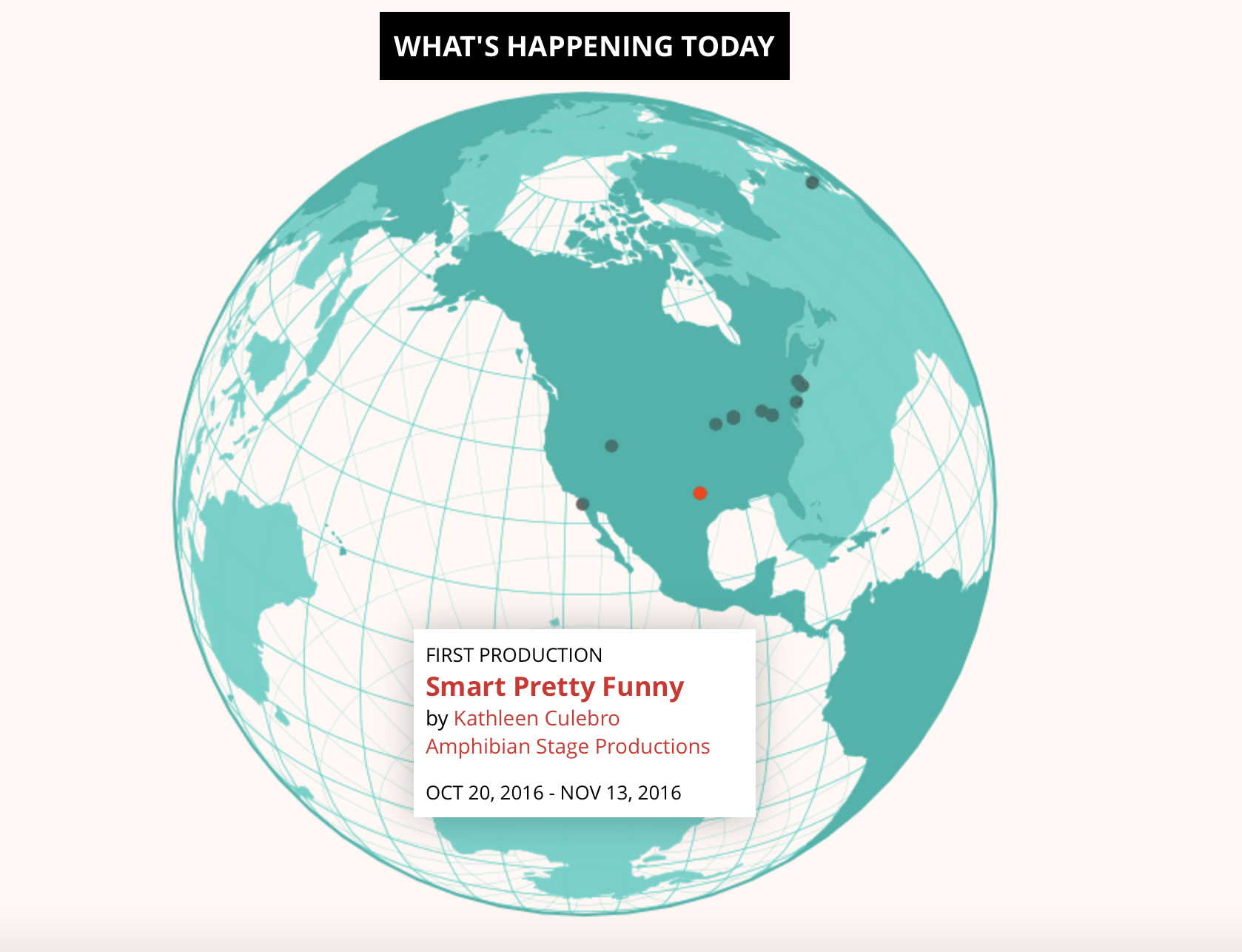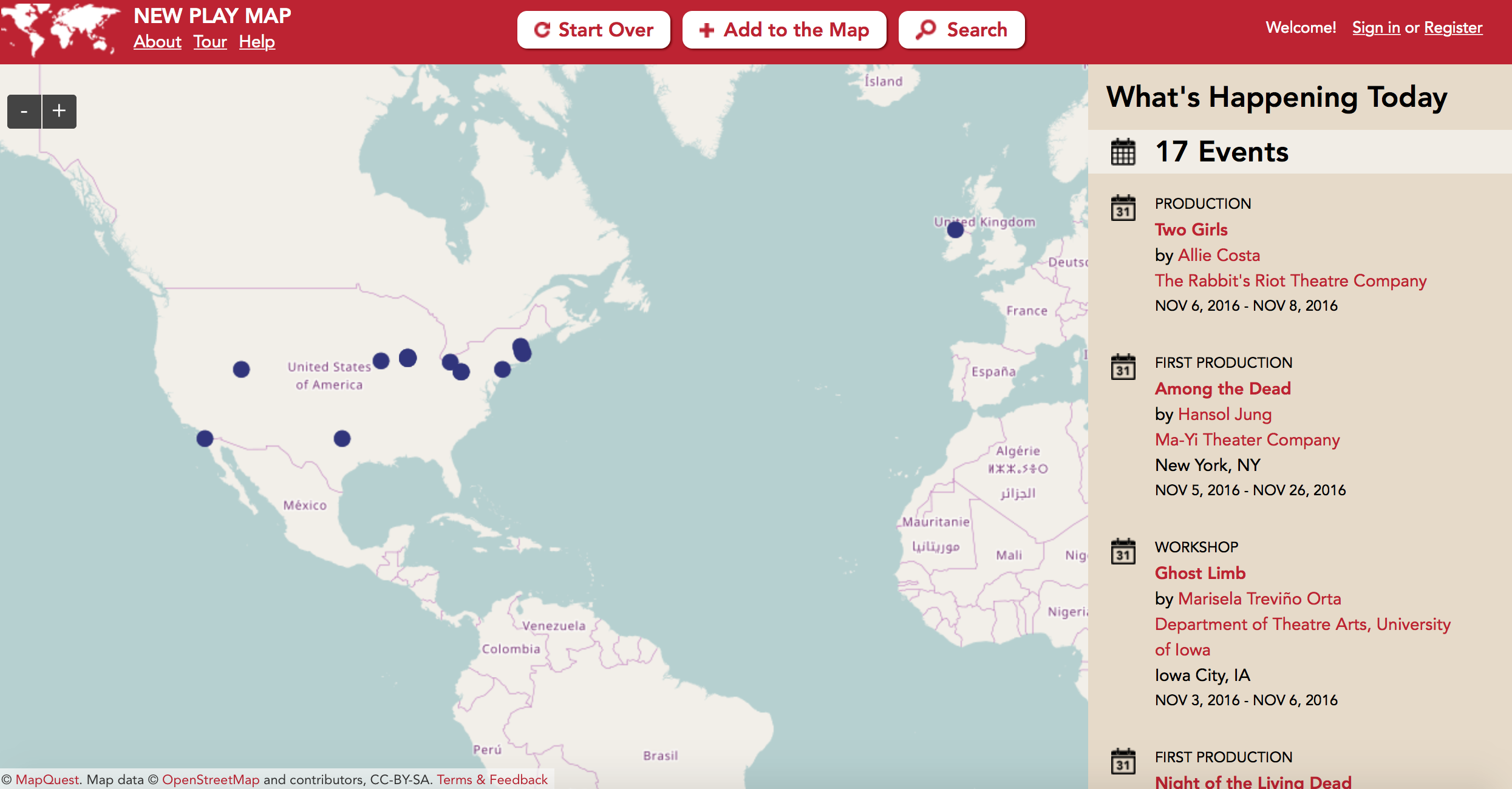Screenshot of The World Theatre Map
Mapping technology is a powerful tool used to visualize data and find connections between isolated data sets. The applications of mapping technology include a commute map, a job board map, an unconventional natural gas wells’ distribution map, and a street art map. By utilizing this technology, Howlround, a theatre think tank based in Emerson College, is currently managing the New Play Map and is about to launch its successor, the World Theatre Map,“a user-generated directory of the world's theatre community and a “real-time media hub of its projects, events, performances, conversations, and ideas.”
The New Play Map
Howlround started forming the idea of the New Play Map in Fall 2009, based on a desire to visualize the infrastructure that exists across the theatre sector. With the National New Play Network’s cooperation and feedback, Howlround launched the first version in January 2011, and its fourth version is currently on their website.
When a user opens the page, a world map with dots appears.
Screenshot of The New Play Map
The dots indicate theatrical events that are currently happening. Users can click a dot to see the details of an event. Users can also search events from the list of organizations, performances, or artists by using its filtering function and trace the tour of a project. Currently, 3,520 organizations are currently participating by uploading their event details.
The World Theatre Map
Howlround is now developing the World Theatre Map, the successor of the New Play Map. According to Howlround:
The World Theatre Map aims to make the field visible to itself and serves as "bottom-up" infrastructure to connect isolated and siloed theatre communities to vital information, resources, research, and learning to further their practice and participation in theatre—both locally and globally. (Our ultimate cultural outcome is to enable paradigm-changing ideas and resources (both within theatre and the greater world) to have the possibility to flourish and take root.)
By employing newer technology, Howlround plans to make the map mobile compatible and geo-local. It will also be more inclusive. The World Theatre Map will not only be for organizations and playwrights, but also for all kinds of theatre people such as designers, directors, and dramaturgs. The map will also be integrated with other Howlround content, including the online journal and the livestreaming of events. Statistics and data visualization will also be available on the platform.
What can participants do with the World Theatre Map?
The World Theatre Map will enable participants to engage in a variety of activities on the platform:
Creating a profile: As Howlround defines the map as a “living-CV of the world's theatre community,” any organization and individuals organizing an event listed on the map can have their own profile page.
Telling stories: By using site data, an individual participant or organization can easily tell a story about themselves or a specific show.
Promoting a show: The Show Profile Page will aggregate all the events associated with a particular show, including a map visualization of a tour, photos, and videos. Social media will be integrated, too. As Howlround’s percentage of international users increased from 7% to 22% since its launch, an organization can promote its shows to the global theatre community.
Researching to connect: The keyword and filtering search function will enable users to learn about shows, artists, or organizations for scouting, dramaturgy, or shared interests.
Challenges
As mapping technology is booming, more and more organizations are becoming interested in mapping projects. However, there are a couple of challenges that organizations should consider. Fast-paced technological improvement is the number one concern. The technology employed for the New Play Map became obsolete in just seven years. Also, mapping is a project that takes a long time and constantly needs to be updated. Before the beta version is launched, an organization must spend a great amount of time and energy to gather and clean up data. Even after the launch, continuous efforts are required to keep the map clean. Consequently, sustainable funding is another concern because this kind of project cannot be maintained with seed money alone. This means that it requires continuous efforts to secure funding. Finally, for an open source project, dissemination of the idea and the buy-in of the community are essential because more participation makes for a more attractive, informative map.
Though challenging, mapping is still a strong tool to visualize existing data, connect communities and tell stories. The World Theatre Map is in its late development stage, and its final mockup is online now. Keep an eye on this project to experience its power for yourself!



